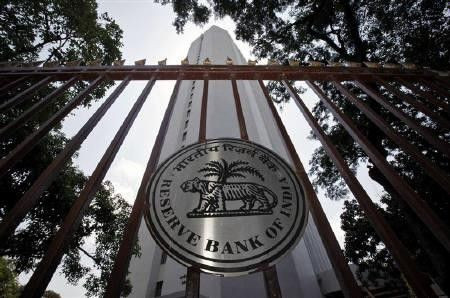India’s Economic Growth Slows Down; Will RBI Cut Rates?

India's economy grew at the slowest pace in more than two years, according to the recent Gross Domestic Product (GDP) numbers which shows the country's economy rose 6.9 percent in the July-September quarter.
The data confirmed that India's economy slowed sharply in the latest quarter, even before the latest drop in business surveys and exports. In July - September 2010, the economy grew at a solid rate of 8.4 percent.
The latest disappointing reading, which came in below second quarter GDP rate of 7.7 percent, is attributable to high local borrowing costs and a deepening eurozone crisis.
Market experts are predicting the slowdown would continue in to the next quarters due to global economic slowdown.
With tight monetary policy beginning to bite and global demand slackening, activity is set to slow further in the coming quarters, Capital Economics analyst Andrew Kenningham wrote in a note to clients.
During the quarter ended Sept.30, growth in the manufacturing sector tumbled to 2.7 percent from 7.8 percent in the same period last year. Farm output increased 3.2 percent compared to 5.4 percent growth in the corresponding period last fiscal.
Meanwhile, the Reserve Bank of India (RBI) has also failed to support the economy as it struggles with inflation that's almost twice the rate in China and higher than in Brazil and Russia. As a result, the RBI has raised interest rates at least ten times since March 2010.
The growth of Indian economy has now come in below RBI's 2011-12 expectation of 7.6 percent, which itself was revised down from 8 percent. In fiscal 2010-11, the Indian economy grew 8.5 percent.
Tighter monetary policy is likely to have a negative impact on growth for many months to come. As a result, we expect growth to slow further in the fourth quarter and to remain below trend in the first half of 2012, even if the global economy is not hit by a major financial crisis in the euro-zone, Kenningham .
The analyst cut his GDP forecast to just 7 percent for both 2011 and 2012 from 7.5 percent. Of course, growth of 7 percent is still very healthy, but the slowdown will have an adverse impact on the public finances.
Even, the budget for 2011/12 was based on an assumption of 9 percent growth this fiscal year. Tax revenues are running below target while the government last week secured parliamentary approval to increase expenditure. The deficit reached 68 percent of the annual target within six months and is likely to significantly exceed the 4.6 percent target for this fiscal year.
Despite the Reserve Bank of India's dual mandate, which requires it to target growth as well as inflation, the central bank is unlikely to cut rates until inflation is on a clear downward trend. RBI indicated in late October that it is not planning to change its repo rate from the current level of 8.5 percent for an extended period, unless there is a major deviation of inflation from expectations.
With the latest measure of wholesale price inflation still well above target, at 9.7 percent, and the rupee having depreciated by 18 percent since early August, interest rate cuts look some way off yet, the analyst said.
© Copyright IBTimes 2025. All rights reserved.





















